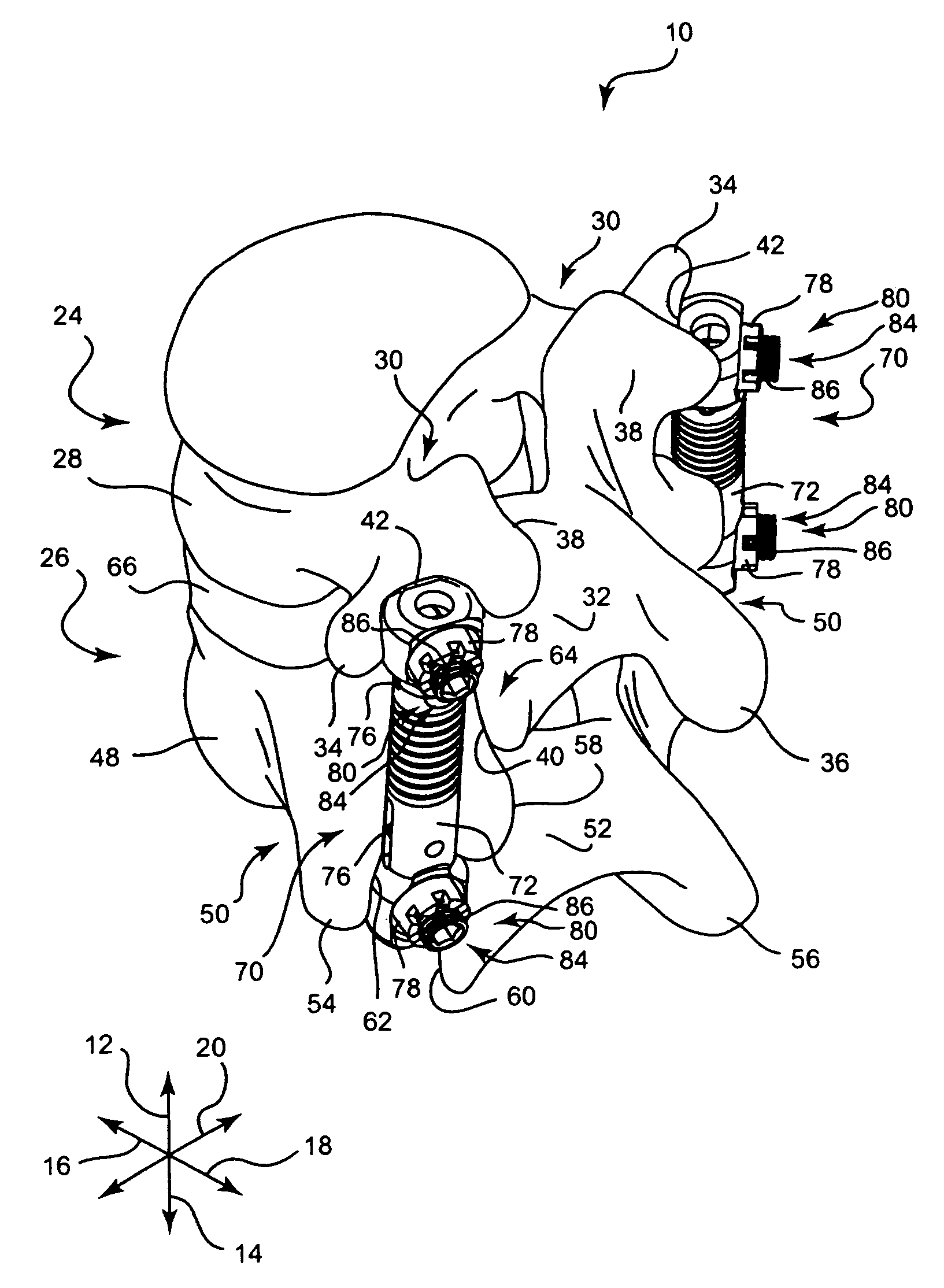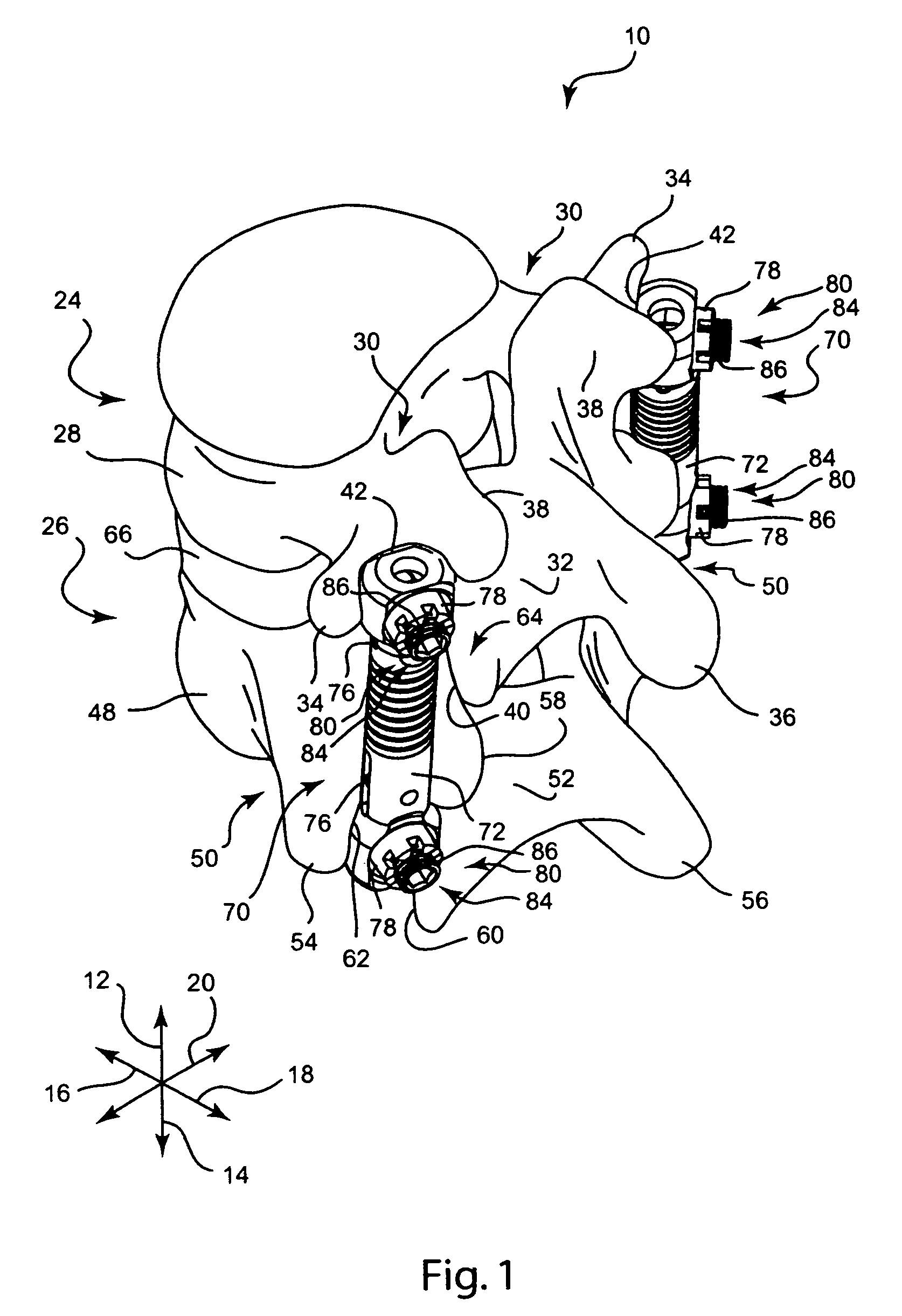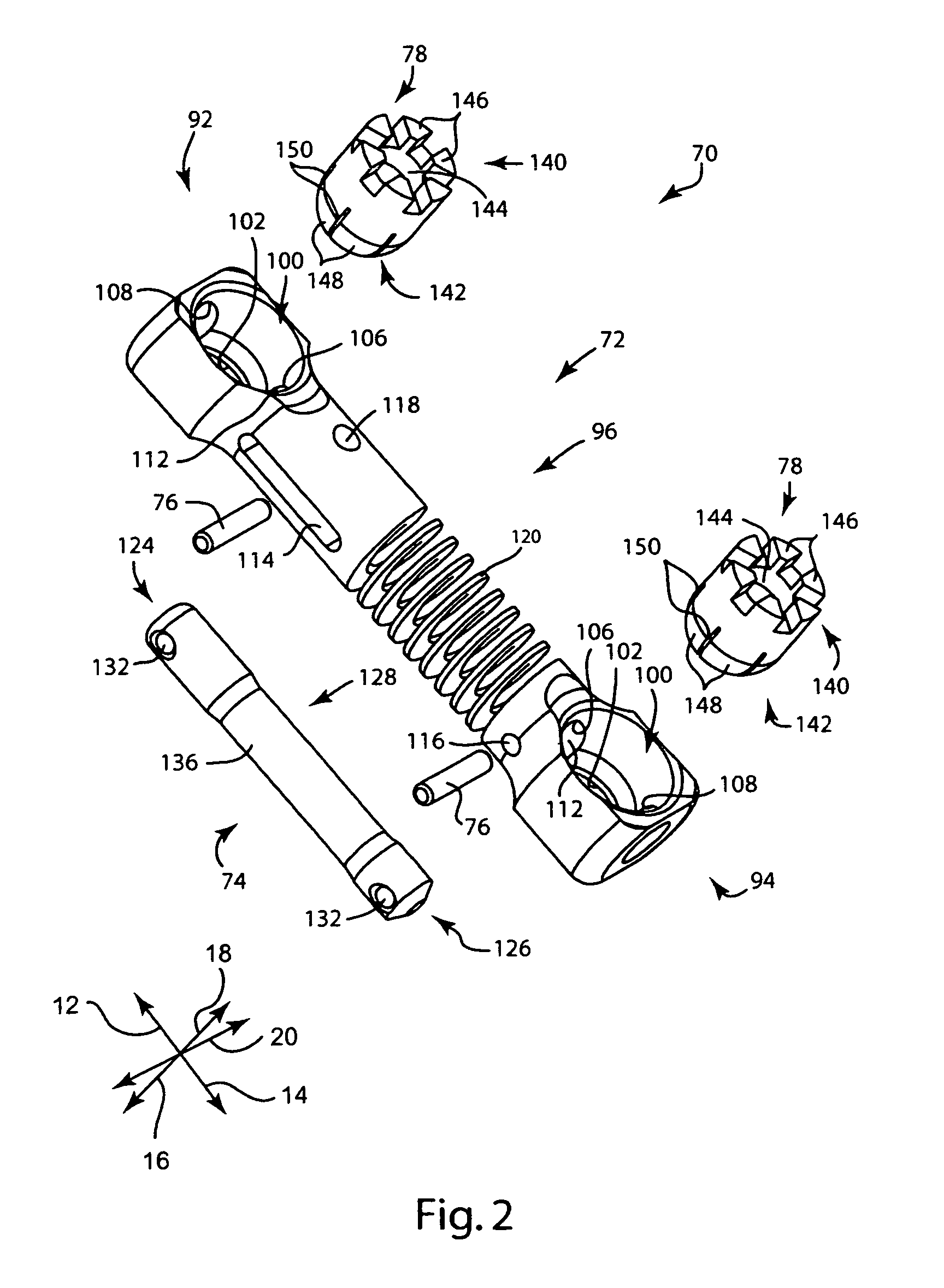Apparatus and method for dynamic vertebral stabilization
a dynamic vertebral and appendix technology, applied in the field of orthopaedic medicine, can solve the problems of excessive relative vertebral motion, inadequate stiffness along one or more spinal motion modes, and discomfort in back pain, and achieve the effects of reducing the relative motion of the vertebrae, inadequate stiffness, and inadequate stiffness
- Summary
- Abstract
- Description
- Claims
- Application Information
AI Technical Summary
Benefits of technology
Problems solved by technology
Method used
Image
Examples
Embodiment Construction
[0018]The present invention advances the state of the art by providing systems and methods that can be used to stabilize relative motion between two vertebrae. The present invention can be used as an alternative to spinal fusion to alleviate back pain resulting from traumatic, inflammatory, metabolic, synovial, neoplastic and degenerative spinal disorders. The configuration and operation of at least one embodiment of the invention will be shown and described in greater detail with reference to FIGS. 1 and 2, as follows.
[0019]In this application, the phrase “telescopic engagement” and variations thereof refer to two members, wherein a portion of one hollow member fits around a portion of a second member to permit relative linear motion of the two members. “Locking” of two members refers to substantially preventing relative translation or rotation between the members along at least one axis. “Generally symmetrical” refers to items that are arranged in a manner that is symmetrical or n...
PUM
 Login to View More
Login to View More Abstract
Description
Claims
Application Information
 Login to View More
Login to View More - R&D
- Intellectual Property
- Life Sciences
- Materials
- Tech Scout
- Unparalleled Data Quality
- Higher Quality Content
- 60% Fewer Hallucinations
Browse by: Latest US Patents, China's latest patents, Technical Efficacy Thesaurus, Application Domain, Technology Topic, Popular Technical Reports.
© 2025 PatSnap. All rights reserved.Legal|Privacy policy|Modern Slavery Act Transparency Statement|Sitemap|About US| Contact US: help@patsnap.com



